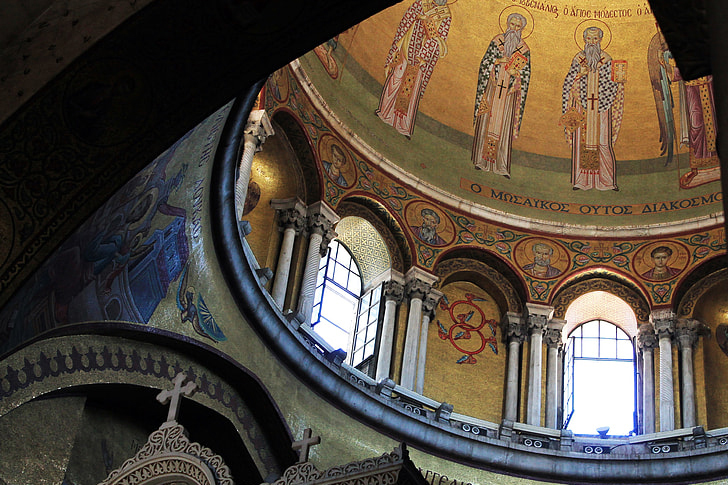Modern and historical rationale about why the Church of the Holy Sepulcher is preferred over the Garden Tomb appears to rest upon the type of tomb Jesus’s body was placed. While the first-century era in which the Jewish dead were traditionally buried differs from those during the first temple period (1200-586 BC), there are clear structural distinctions between the two.
The Garden Tomb is dated within the first temple period as referenced between the 9th and 7th centuries BC. By historical photographic record and visual observation, the interior of this tomb consists of a small collection area reserved for bone collection of the Jewish dead. Whereas it is suggested that the Garden Tomb bed platform is reused by the deceased while the bones of prior corpses in decay become co-mingled in an adjacent container location. Moreover, this tomb is atypical of first-century tombs by the absence of burial niches (kukhin/kokim) or arch-covered burial platforms (arcosolium) hewed into a tomb wall.
The tomb of the Holy Sepulcher is of a first-century burial tradition. That is, it consists of a number of burial niches and platforms within a cave environment. That after a period of one year of corpse decay, the bones of the dead became collected and placed into an ossuary or osteophagi for separation and portability of an individual’s remains.
As a comparison between the tomb descriptions of Lazarus and Joseph of Arimathea, there is a commonality in scripture from the root Greek language of the biblical text. The personal tomb reference of risen Lazarus given in John 11:38 is mnēmeion or mnēmeiou to indicate a memorial chamber sense of meaning. That is, a burial chamber constructed and marked for a person’s remembrance. The tomb of Joseph of Arimathea has given the same term in scripture (Matt 27:60, John 19:41) to indicate the type of a new tomb he constructed in a garden. Matthew 27:60 explicitly reads among various English translations that Joseph made the tomb for himself.
In reference to Luke 23:55, the same account uses the term mnēmeion as ‘tomb’ to describe how Jesus’s body was laid. Two verses prior to that in Luke 23:53, the Greek term for tomb changes to mnēma having a burial chamber sense of meaning. Different than mnēmeion which is a memorial chamber sense of meaning. Where mnēma in scripture appears closer in meaning to a sepulcher in use as a gravesite.
The Babylonian Talmud (Baba Metsia 85b; Baba Batra 58a) references this type of tomb as either ‘rock-hewn’ or a ‘natural cave’ translated to the term ‘Mearta’. Mearta translated to English is grotto. The term grotto in English is defined as a small picturesque cave, especially an artificial one in a park or garden. Furthermore, by the first-century tradition, a kukhin (kokhim), or arcosolium hewed into the wall of a Mearta suggests a more plausible account of where Jesus was interred. It is, therefore, reasoned this type of structure found in the Church of the Holy Sepulcher adds further credibility and confidence about where Jesus was buried and rose from the dead.
To summarize, comparative scriptural references and historical records both point to the tomb of Jesus as a first-century sepulcher. As through the centuries, it is recognized why the Church of the Holy Sepulcher is the preferred burial location of Jesus.
As one may conclude that Joseph of Arimathea constructed the tomb of Jesus according to first-century tradition or practices, the Garden Tomb is a wonderful and meaningful pilgrimage location for fellowship and remembrance of our LORD and King.













